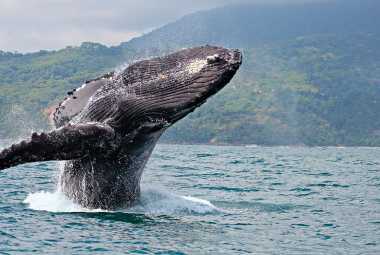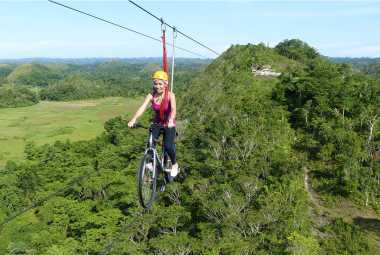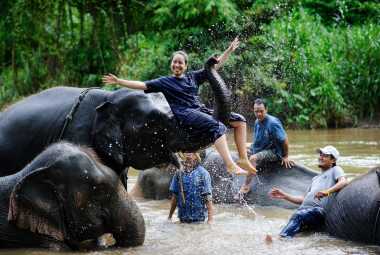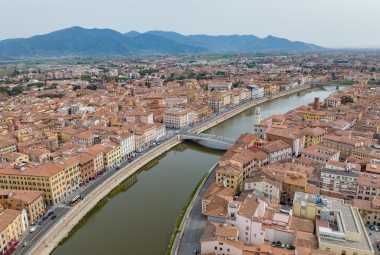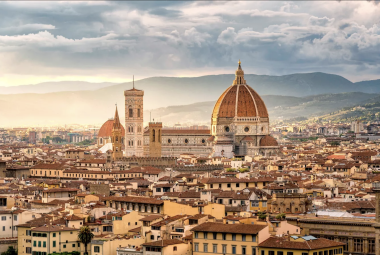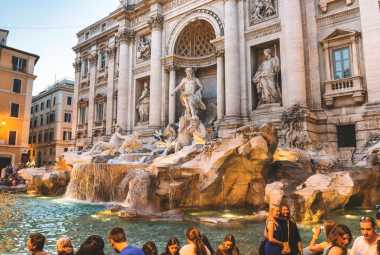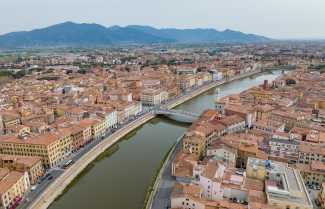Image by philstar.com
*Vacation Mode is a for-profit site. It contains paid banner advertisements that are generated and managed by a third-party network. This site also includes relevant affiliate links (both in the content and on the sidebar) all of which we do our best to clearly mark as such.
Quick Summary
- Overview of Traveling to the Philippines:
- Offers a blend of breathtaking landscapes, vibrant culture, and warm hospitality.
- Known for stunning beaches, crystal-clear waters, lush tropical forests, and rich cultural heritage with colorful festivals and delicious cuisine.
- Visa Requirements:
- Essential to check visa requirements based on nationality.
- Necessary documents: valid passport, completed visa application form, proof of funds, round-trip itinerary, and accommodation details.
- Certain nationalities eligible for visa-free entry for a specific period.
- Best Time to Visit:
- Dry season (December to May) for beaches and sunbathing.
- November to April for water sports.
- February for cultural festivals like Ati-Atihan and Sinulog Festival.
- Currency:
- Philippine Peso (PHP) is the official currency.
- Coins (sentimo and piso) and banknotes (20, 50, 100, 200, 500, and 1000 pesos).
- Exchange currency at authorized centers or banks; be aware of counterfeit bills.
- Popular Tourist Destinations:
- Boracay for beaches and nightlife.
- Palawan for nature, underground river, and El Nido.
- Banaue Rice Terraces, a UNESCO World Heritage Site.
- Intramuros in Manila for historical sites.
- Culture and Customs:
- Influences from Malay, Chinese, Spanish, and American cultures.
- Traditional dishes: adobo, sinigang, lechon.
- Traditional clothing: Barong Tagalog for men, Maria Clara dress for women.
- Important to understand and respect local customs and traditions.
- Safety and Security:
- Exercise vigilance, follow safety guidelines, and be aware of potential risks.
- Be cautious of common scams, such as taxi scams and counterfeit goods.
- Know local emergency numbers for police and medical services.
- Accommodations:
- Wide range of options from luxurious beachfront resorts to budget-friendly hostels.
- Best places to stay include Palawan, Bohol, and Davao.
- Accommodations cater to various preferences and budgets.
- Frequently Asked Questions:
- Must-try dishes include adobo, sinigang, lechon, and sisig.
- Top places to visit are Boracay, Palawan, Siargao, Manila, Cebu, and Baguio.
- Philippine Peso (PHP) is the recommended currency for transactions.
- The Philippines has a tropical climate with a dry season (November to April) and a wet season (May to October).
- Common customs include the "mano po" gesture and celebrating "fiesta" or festivals.
- Essential Filipino phrases: "Magandang araw" (Good day), "Salamat" (Thank you), "Paalam" (Goodbye).
Planning a trip to the beautiful Philippines? From visa requirements to popular tourist destinations, traditional dishes to safety concerns, this comprehensive guide covers all the essential questions you may have about traveling to this tropical paradise.
Discover the best time to visit, cultural practices, accommodation options, and more. Whether you are a first-time visitor or a seasoned traveler, this article has got you covered with all the information you need for a memorable trip to the Philippines.
Traveling to the Philippines
Traveling to the Philippines offers a blend of breathtaking landscapes, vibrant culture, and warm hospitality, making it a top destination for travelers seeking diverse experiences.
The Philippines is known for its stunning white sandy beaches, crystal-clear waters perfect for diving and snorkeling, and lush tropical forests that are a paradise for nature lovers.
Whether you're exploring the bustling city life of Manila, trekking through the rice terraces of Banaue, or relaxing on the beautiful islands of Palawan, there is something for every traveler.
The country's rich cultural heritage is reflected in its colorful festivals, traditional dances, and delicious cuisine that combines Spanish, Chinese, and Malay influences.
Do I need a visa to visit the Philippines?
When planning a trip to the Philippines, it is essential to check the visa requirements based on your nationality to ensure a smooth entry into this tropical paradise.
Upon determining your visa requirements, you can start preparing the necessary documents such as a valid passport, a completed visa application form, proof of sufficient funds for your stay, round-trip flight itinerary, and accommodation details. It's worth noting that certain nationalities are eligible for visa-free entry, allowing them to stay for a specific period.
Once you have everything ready, you can look forward to exploring the breathtaking beauty of places like Palawan’s turquoise waters, the bustling streets of Manila, or the stunning rice terraces in Banaue."
What is the best time to visit the Philippines?
The best time to visit the Philippines depends on your preferred activities, whether you seek sunny beach days, vibrant festivals, or cooler mountain retreats.
For those craving crystal-clear waters and sunbathing, the dry season from December to May is the perfect time to explore the breathtaking beaches of Boracay and Palawan.
Adventure enthusiasts may find the months of November to April ideal for thrilling water sports like diving and surfing.
If you are a culture lover, plan your trip around February to witness the lively Ati-Atihan Festival in Aklan or Sinulog Festival in Cebu. These vibrant celebrations showcase the rich heritage of Filipino traditions, attracting tourists globally.
What is the currency used in the Philippines?
The official currency of the Philippines is the Philippine Peso (PHP), and it is widely used across the country for transactions, making it essential for travelers to familiarize themselves with the local currency.
The Philippine Peso is further divided into denominations such as coins (sentimo and piso) and banknotes (20, 50, 100, 200, 500, and 1000 pesos). When exchanging your currency, it's advisable to do so at authorized foreign exchange centers or banks to ensure you get fair rates. As of [current date], the exchange rate typically hovers around [current exchange rate] PHP to 1 USD. While in the Philippines, it's prudent to keep a mix of smaller denominations for convenience and to avoid any issues with vendors who may not have change for larger bills.
When handling Philippine Pesos during your stay, always count your change carefully after purchases and be cautious of potential scams involving counterfeit bills. It's also wise to carry a secure money belt or wallet to prevent theft, especially in crowded areas. Familiarize yourself with the security features of Philippine Peso banknotes to easily identify genuine currency. If you prefer using credit or debit cards, ensure they are widely accepted by establishments in the Philippines, especially in more remote areas where cash is more commonly used.
What are the most popular tourist destinations in the Philippines?
The Philippines boasts a myriad of enchanting tourist destinations, from pristine beaches and lush mountains to historical landmarks and vibrant cityscapes, offering a diverse range of experiences for every traveler.
Whether you seek sun-kissed shores, the crystal-clear waters of Boracay beckon with their powdery white sand and vibrant nightlife.
Palawan's breathtaking landscapes, such as the underground river in Puerto Princesa and picturesque El Nido, offer a paradise for nature lovers.
Delve into the rich cultural tapestry of the Banaue Rice Terraces, a UNESCO World Heritage Site, showcasing the ingenuity of the Ifugao people.
Wander through the storied walls of Intramuros in Manila, a historical gem reflecting Spanish colonial architecture and Philippine heritage.
Culture and Customs in the Philippines
Immerse yourself in the rich tapestry of Filipino culture, where traditions, flavors, and celebrations intertwine to create a vibrant mosaic of heritage and identity.
The Philippines, with its diverse cultural influences from Malay, Chinese, Spanish, and American origins, offers a fascinating blend of traditional dishes like adobo, sinigang, and lechon, reflecting a history of trade and colonization.
The vibrant clothing, such as the Barong Tagalog for men and the Maria Clara dress for women, showcases intricate designs and craftsmanship passed down through generations.
Traditional customs like the Bayanihan spirit of communal unity and hospitality are woven into daily life, while music forms like Kundiman and Tinikling dance embody the rhythm and soul of the Filipino people.
What are some traditional Filipino dishes?
Filipino cuisine is a delightful fusion of flavors and influences, with signature dishes like adobo, sinigang, and lechon showcasing the country's culinary diversity and creativity.
Apart from these well-known dishes, Filipino cuisine also boasts an array of delectable street food delicacies that are deeply rooted in the country's vibrant culture. From the iconic balut (boiled fertilized duck embryo) to the crispy and tangy fish balls served in sweet and spicy sauce, street food vendors across the Philippines offer a sensory experience that reflects the Filipino love for bold flavors and textures.
Regional specialties such as Bicol Express from the Bicol region, a spicy stew made with coconut milk and chilies, highlight the diverse regional flavors found throughout the archipelago.
What is the traditional clothing in the Philippines?
Traditional Filipino attire reflects the country's cultural heritage and history, with intricate designs, vibrant colors, and indigenous materials showcasing the artistry and craftsmanship of Filipino weavers and artisans.
The Barong Tagalog, a formal attire for men, is known for its lightweight fabric and intricate embroidery, making it a popular choice for special occasions like weddings and celebrations.
On the other hand, the Maria Clara dress, a traditional Filipina attire, features elegant butterfly sleeves and a flowing silhouette, symbolizing grace and femininity.
These garments hold deep cultural significance, representing Filipino identity and pride. Travelers seeking authentic Filipino attire can explore markets and boutiques in cultural hubs like Manila and Cebu, where they can find a wide array of traditional garments crafted with meticulous attention to detail.
What are some important cultural practices in the Philippines?
Understanding Filipino cultural practices is key to respecting local customs and traditions, whether it's observing proper etiquette, participating in festivals, or navigating bustling markets with grace and courtesy.
Being mindful of dos and don'ts in social interactions is essential when engaging in conversations with locals. Politeness and a friendly demeanor are highly valued in Filipino society, creating a warm and welcoming atmosphere.
Attending festivals provides a deeper insight into the rich cultural heritage of the country, allowing you to immerse yourself in traditional dances, music, and cuisine.
Exploring local markets not only offers a glimpse into daily life but also gives you the opportunity to experience the vibrant array of colors, aromas, and flavors unique to the Philippines.
Safety and Security in the Philippines
Ensuring a safe travel experience in the Philippines involves staying informed about common scams, knowing emergency numbers, practicing caution in unfamiliar environments, and prioritizing personal well-being.
Being aware of your surroundings and avoiding displaying valuable items can deter potential scammers. It is advisable to keep a copy of important documents and contact information for local authorities or your embassy.
Take necessary health precautions such as staying hydrated, using insect repellent, and seeking medical advice before traveling to remote areas.
Respect local customs and dress modestly, particularly in religious sites, and be cautious of sharing personal details with strangers.
By staying vigilant and informed, you can enjoy your trip while prioritizing your safety.
Is it safe to travel to the Philippines?
While the Philippines offers incredible travel experiences, it is essential to exercise vigilance, follow safety guidelines, and be aware of potential risks to ensure a secure and enjoyable trip.
For solo travelers, always inform someone trustworthy about your itinerary and check-in regularly. Avoid displaying expensive belongings and be cautious when interacting with strangers.
Group travelers should establish a buddy system and designate meeting points in case of separation. Stay updated on areas to avoid, especially at night, and be wary of isolated areas with limited visibility. Heed local authorities' safety protocols, register with embassies if necessary, and carry copies of important documents securely.
By adhering to these precautions, travelers can enhance their trip with peace of mind.
What are the common scams in the Philippines?
Awareness of common scams in the Philippines is crucial for travelers to prevent falling victim to fraudulent schemes, such as taxi scams, counterfeit goods, and identity theft attempts.
Being alert to these scams can save you from potential financial losses and stress during your trip. Taxi scams, where drivers may take longer routes to overcharge passengers, can be avoided by using reputable taxi companies or ride-sharing apps. When shopping, be cautious of heavily discounted brand-name items that may turn out to be counterfeit. Protect yourself from identity theft by safeguarding personal information and using secure ATMs. If you encounter suspicious behavior, trust your instincts and seek help from authorities or reputable locals.
What are the emergency numbers in the Philippines?
In case of emergencies during your visit to the Philippines, it is vital to know the local emergency numbers, including police, medical services, and embassy contacts, for prompt assistance and support.
Whether you are facing a medical emergency, a safety concern, or need assistance with legal matters, being prepared with the right contact information is crucial.
For police assistance, dial 911 or contact the Philippine National Police at 117. In case of medical emergencies, dial 911 for an ambulance or reach out to local hospitals such as Philippine General Hospital.
It is also advisable to have your embassy's contact information handy in case of any legal or citizenship-related issues. Remember that effective communication during emergencies can make a significant difference in receiving timely help and support.
Accommodations in the Philippines
Accommodations in the Philippines cater to a diverse range of preferences and budgets, offering luxurious beachfront resorts, cozy boutique hotels, and budget-friendly hostels for solo adventurers and family getaways.
Whether you seek a luxurious escape on the pristine shores or a cozy retreat nestled in the heart of the city, the Philippines has something for everyone. From upscale hotels boasting world-class amenities and stunning ocean views to charming bed and breakfasts exuding local charm, travelers can find accommodations that suit their unique tastes. For those on a budget, there are plenty of affordable options like guesthouses and vacation rentals that provide comfort without breaking the bank. Families can opt for spacious resorts with kids' clubs and recreational activities to ensure a memorable stay for all.
What are the best places to stay in the Philippines?
Choosing the perfect place to stay in the Philippines depends on your preferences, whether you seek luxurious beachfront resorts, charming boutique hotels, or budget-friendly accommodations that cater to solo travelers and families alike.
- For those craving a tropical paradise, Palawan offers stunning overwater bungalows surrounded by crystal-clear waters and vibrant coral reefs.
- If you're a nature enthusiast, consider staying in an eco-friendly lodge nestled within the lush rainforests of Bohol.
- Adventurous souls may find adrenaline-pumping activities right outside the door of accommodations in Davao, known for its exhilarating zip lines and hiking trails.
Each region in the Philippines presents a unique blend of culture, adventure, and relaxation, ensuring there's a perfect lodging option for every type of traveler.
What are the different types of accommodations available in the Philippines?
Accommodation options in the Philippines span a wide spectrum, ranging from luxurious beachside resorts and upscale city hotels to cozy bed and breakfasts, backpacker hostels, and family-friendly guesthouses, ensuring a comfortable stay for every traveler.
From high-end resorts with private villas and exclusive spas for those seeking luxury to budget-friendly hostels perfect for solo adventurers and backpackers looking to make new friends and keep costs down, there is something for everyone.
Families can opt for spacious accommodations with kid-friendly facilities, while budget-conscious tourists will find affordable room options with shared amenities.
Travelers desiring a touch of opulence can indulge in lavish suites and premium services offered by top-notch hotels scattered across the archipelago."
Frequently Asked Questions
What are the must-try dishes in the Philippines?
Some of the most popular dishes in the Philippines include adobo, sinigang, lechon, and sisig. Each region also has its own unique specialty, so be sure to explore and try different dishes!
What are the best places to visit in the Philippines?
The Philippines is known for its beautiful beaches, so some of the top destinations include Boracay, Palawan, and Siargao. Other popular places to visit are Manila, Cebu, and Baguio.
What is the currency used in the Philippines?
The currency used in the Philippines is called the Philippine Peso (PHP). It is recommended to exchange your currency to PHP before your trip, but most major establishments in tourist areas also accept US dollars.
What is the weather like in the Philippines?
The Philippines has a tropical climate, with two distinct seasons: the dry season from November to April, and the wet season from May to October. It is generally hot and humid all year round, but the temperature may vary depending on the region.
What are some common customs and traditions in the Philippines?
One common tradition in the Philippines is the "mano po" gesture, where younger family members show respect to elders by taking their hand and bringing it to their forehead. Another is the "fiesta" or festival, which is often celebrated in different regions throughout the year.
What are some essential Filipino phrases to learn?
Some basic Filipino phrases to learn are "Magandang araw" for "Good day," "Salamat" for "Thank you," and "Paalam" for "Goodbye." It's also useful to know basic phrases for ordering food, asking for directions, and bargaining at markets.


